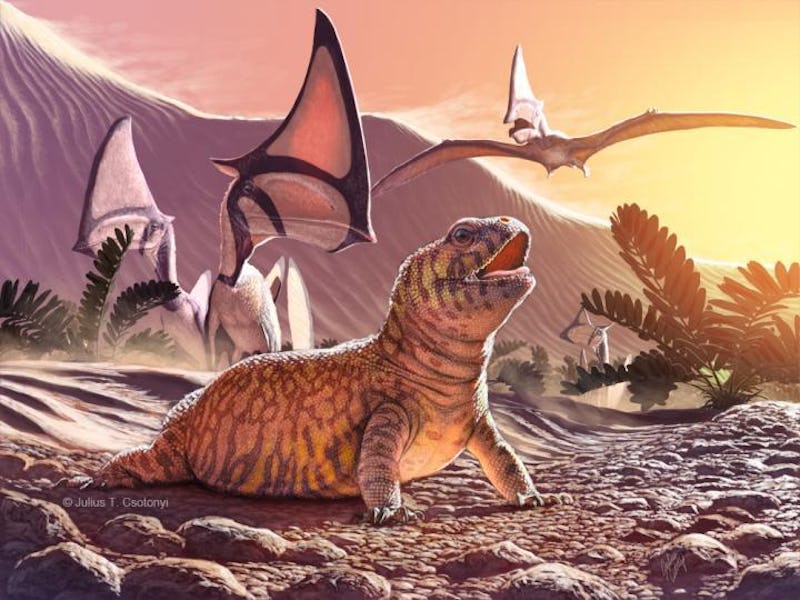7 Missing Links We've Found in the Past Decade
The evolutionary chain just gets longer and longer.

The idea of a biological missing link is too neat of a metaphor: Evolution has no final destination and species don’t mutate in just one direction. There are plenty of missing links that don’t connect to much. And there are plenty of chains that just end.
Something is aesthetically pleasing about the concept of biological missing links — if we only dug around in the sand and dirt long enough, and got lucky enough, we could forge a sequence that spans backward for eons. And there are certainly very real areas where we don’t really know how life shook out, of course, until we uncovered a particularly special specimen. In that spirit, here are some of the noteworthy missing links from the past decade:
1. The Toothy Lizard
Iguanas, which live mainly in the Americas, and Old World lizards like bearded dragons and chameleons, share an usual feature — their top teeth don’t have sockets and are instead joined directly to the jawbone. The relationship between these lizards was something that puzzled biologists until the discovery of a fossil of Gueragama sulamericana, an 80-million year old lizard that dates the fused-teeth lizards far earlier than thought. Having crawled over the earth when Pangea was mostly still put together, the thinking goes, is why you’ll find these critters in now-far-flung corners of the world.
2. The Megaseal
A geology Ph.D. student at the University of Otago in New Zealand announced in February that he’d analyzed what had previously been categorized as a bit of walrus and found it was in fact an ancient fur seal fossil. This puts the fur seal and sea lion lineage back to about 17 million years, to the transition from bearish chompers to the simpler teeth of modern sea lions.
A modern-day descendant of the phallus-worm.
3. The Phallic Worm
It’s difficult to trace the ancestry of soft and fleshy creatures like worms because they don’t have hard bits that fossilize, but occasionally scientists get lucky. Take the University of Montreal biologists who found 505 million-year-old wiener worms that mark the oldest known shared ancestor of aquatic worms and worm-like but tentacled critters called pterobranchs.
4. The OG Bat
An early fossil bat, described in 2008, demonstrates that the ability to fly came before echolocation. The slender wing-fingers of Onychonycteris finneyi could have allowed for primitive flapping, but the skull seems to lack the necessary cranial structures for echolocation, lending credence to the flight-first hypothesis.
5. Pantera
In late 2013, an international team of paleontologists declared that Pantera blytheae was the oldest known big cat on record. The 6-million-year-old ancestor is the earliest of the family of lions, tigers and leopards (domestic cats and smilodons belong to other categories).
6. The Origin of Turtle Power
A fossil dating back 220 million years sheds light on how the turtle got its shell. Paleobiologists at the Smithsonian Museum of Natural History and the State Museum of Natural History in Germany discovered an ancient reptile called Pappochelys, which had a layer of armor-like bones across its stomach. Because aquatic predators more frequently attack from below, these bones also support the idea that turtles’ watery origins go back quiet some time. The scientists believe these belly plastrons eventually fused with the ribs, forming shells.
7. The Missing Link That Stayed Missing
A fossilized mammal named Darwinius masillae sparked a bit of a paleontological scuffle in 2009 when researchers claimed the specimen — named Ida or The Link — was the earliest known primate in the human lineage. Nine months of debate and analysis later, the evidence mounted: Ida offered a good deal of info to what we know about early lemur-like primates — just not, you know, about us. The legend of the Link seems destined for interesting footnote rather than actually earning the Google doodle it inspired.